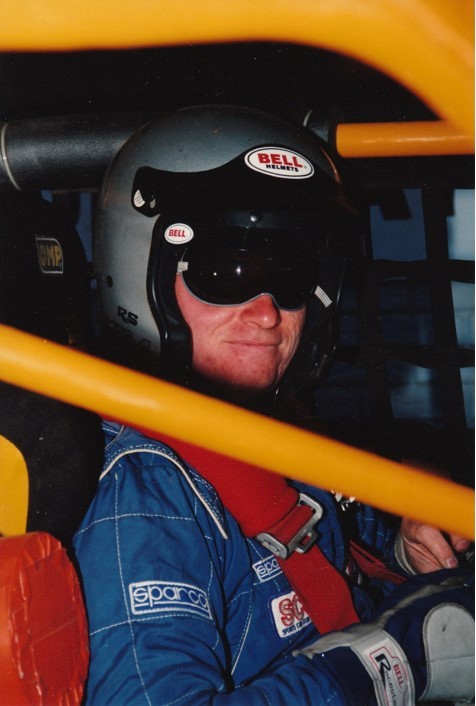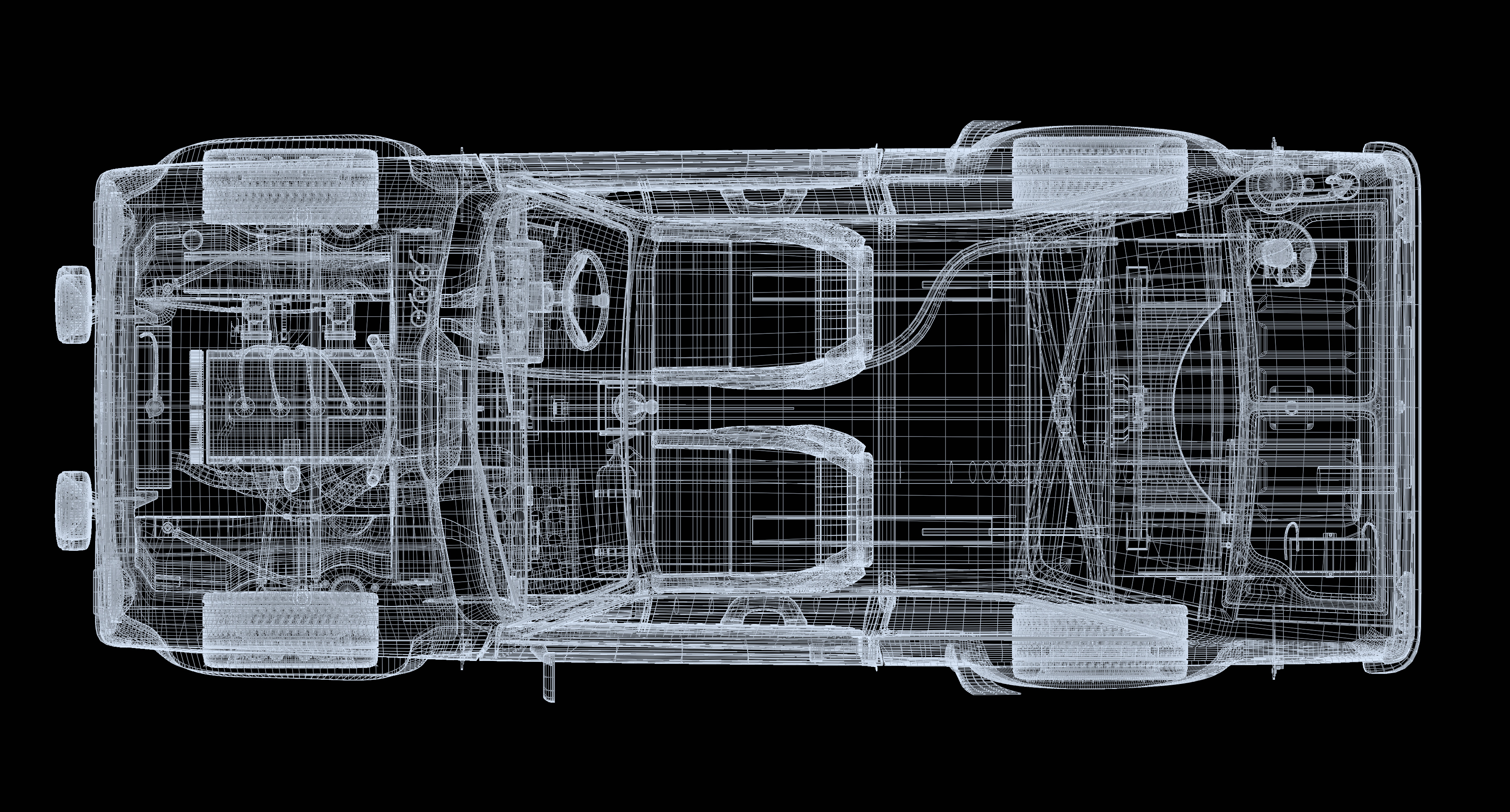David Rezac (Lead Environment Artist)

David Rezac has always loved games: from making board games as a kid with his dad to creating game worlds of his favourite video games as a teen, working in the industry was always a dream … until he landed up getting a role with Slightly Mad Studios back in the day. As S4’s Lead Environment Artist, you’ve no doubt seen much of his work, including his recreation of the 1971 Le Mans track for the Project CARS Le Mans DLC pack. So what’s he working on now?
What exactly does an Environment Artist do?
I get asked this often and I have a prepared statement now! I create everything that the player sees around them. From single objects like tables, chairs, paintings on the walls, to walls, floors and ceilings in interiors, to the complete outdoor environment including roads, sidewalks and vegetation such as trees and grass and including buildings and other architectural structures. Simply put, I'm making a virtual world that can match the real one. With the advent of new technologies, we’re getting closer and closer to the day this virtual world will be indistinguishable from the real one.
How did you get involved in the industry?
Since I can remember, I have always loved drawing and playing board games and I remember creating my own board games with my dad, based on movies and cartoons that were on TV at the time. At the same time, my dad and I shared a love for video games. The first one I remember was some kind of Atari clone called Rambo Games or something with a picture of Sylvester Stallone from the movie Rambo on the box! Good fun.
The real turning point though came with the arrival of the PS1 and Crash Bandicoot. That's when I started drawing my own worlds and characters and thinking about making games one day as an actual career. I basically have no art background. I graduated from the High School of Industry with a degree in Electronic Computer Systems and taught myself graphics with the help of a few books and internet portals around 3D and 2D graphics. Everything was still very much in its infancy back then—there was no YouTube with tutorials!
I started out as a 2D, DTP graphic designer (Corel Draw) and gradually, thanks to the internet and my school (contacts), I got into 3D graphics and later to game development. It was a long journey to landing my first job in the industry with Slightly Mad Studios working on Need for Speed Shift & Unleashed, and the Project CARS series.
Funnily enough, before that, I was uninterested in anything automotive. I didn't even have a driver's license! Today, I’ve got couple of released racing game titles, a car in front of my house, and a take-apart “old-timer” in the garage which I would love to renovate, modify, and drive around the world.

How long does it generally take to create a track to completion?
This depends on the size and complexity of the track in terms of the amount and difficulty of assets and buildings on and around the track. A smaller local circuit with a few buildings will need a completely different development time than a city circuit of a larger size such as Long Beach. Or, for example everyone’s favourite track, the “Green Hell”. The Nordschleife is a monster track, but in truth, it's more of a tunnel in the woods with a few buildings. So paradoxically it takes less time than, for example, the Monaco circuit, where it’s one complex building on top of another.
Usually, the process is a months-long one, from the actual processing of the scan data to splitting up the tasks, to the actual creation of the models and textures and intergrading them into the engine. Then there’s placing vegetation and so-called “animating the track” by placing people in the stands and around the track, and parked cars in the parking lots, and other animated element like birds in the sky, a helicopter flyby here and there, etc. Then we can’t forget the audio component (ambient sounds on the track), placements of replay cameras, and implementation of weather simulation on the track as well as AI and physics tuning on the track etc. It’s a big job for sure. Time-intensive.
How valuable is driver feedback to the track once you’ve built it?
Feedback is extremely valuable, especially from real racers who have personal experience with racing on particular tracks. It’s one thing having the layout one hundred percent correct; it’s another to understand how certain turns “feel” to the driver.

How accurate is a scan of a track and is there a big difference to one that is created without a scan?
The most accurate scan data is the so-called point cloud (or laser scan Lidar) data, which is accurate to within millimeters. This data is a joy to work with. You can also generate a polygonal mesh from this data but this is not so accurate. It depends on what settings one chooses when generating the polygonal mesh, really. Furthermore, photogrammetry technology is widely used with a combination of drones and now even with your smart phones, and as everything is more affordable and the software can process this data more and more easily, photogrammetry is very useful and helps us to do things faster and more accurately.
Back in the day, we used to make tracks just using top-view maps, photos, and onboard videos directly from the track. This process was much more challenging and heavily dependent on the individual artist to accurately estimate the proportions of the objects and buildings on the track. Here, you could see how well a person knew his craft. How good an artist he was. With the advent of scans, this part has become much easier. But that doesn't mean it’s easy. For today’s generation of games, there’s a need for much more detail. The various surfaces on the track and the actual objects and buildings around the track are much more detailed in terms of geometry and texture resolution.
What was the most exciting project you’ve ever worked on and why?
I ask myself this question from time to time and re-evaluate it as I evolve and what I have been through. I always go back to the historical version of the Le Mans track (1971) for Project CARS 2 and The Spirit of Le Mans DLC. This track is etched in my memory, and what my team and I managed to create with just a few shots from the film “Le Mans” and using photos from the archive and what little we found on the internet was astonishing (in my opinion!). I enjoyed the detective work, where I was able to get a lot of details from one photo, such as the position of trees around the circuit, unique details on buildings and props around the track, and I even found a roster of drivers that I wanted to use for pit-building and garage “cubicles”. The Belgian Circuit de Spa-Francorchamps was similarly amazing to recreate: I also spent a few months of my life there too!
What’s the one thing that excites you the most about the new sim you’re working on?
I like that we are starting from scratch and that I can be at the very beginning of a new racing title. Planning how to do what, coming up with a new pipeline, new Engine, new 3D package and so on, that’s very rare in this industry. It’s an exciting moment for us at the studio, and I really believe this affords us an opportunity to bring something fresh to the sim racing community.







.png)

























